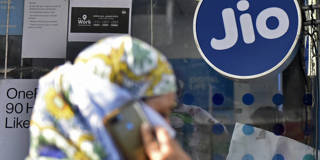Over the past five years, India’s mobile-internet and digital-services ecosystem has grown rapidly, owing to the pioneering efforts of large private-sector players. Although this industry-led growth is somewhat unusual, it offers a model that could benefit other developing countries.
MILAN – Over the past five years, India has experienced an unusually rapid expansion of digital connectivity and access to services. This has had a positive impact on the inclusiveness of economic growth; on efficiency and productivity in retail, supply chains, and finance; and on entrepreneurial activity.
India’s engagement with digital technology dates to the late 1980s. Major investments in computer science and education were made under Prime Minister Rajiv Gandhi’s administration (1984-89). And with the expansion of internet access in the 1990s, India became home to many major outsourcing companies in IT administration, business processes, and customer service. But because the infrastructure needed for widespread mobile-internet access remained deficient, penetration lagged and data costs for mobile users ended up being among the highest in the world.
Then, in 2010, when much of the country’s existing service offerings were still in 2G and 3G, IBSL, a small telecoms company, purchased spectrum in an auction that included rights to much faster 4G frequency bands. IBSL was then acquired by billionaire Mukesh Ambani’s energy conglomerate, Reliance Industries, which thus gained the 4G spectrum rights.

MILAN – Over the past five years, India has experienced an unusually rapid expansion of digital connectivity and access to services. This has had a positive impact on the inclusiveness of economic growth; on efficiency and productivity in retail, supply chains, and finance; and on entrepreneurial activity.
India’s engagement with digital technology dates to the late 1980s. Major investments in computer science and education were made under Prime Minister Rajiv Gandhi’s administration (1984-89). And with the expansion of internet access in the 1990s, India became home to many major outsourcing companies in IT administration, business processes, and customer service. But because the infrastructure needed for widespread mobile-internet access remained deficient, penetration lagged and data costs for mobile users ended up being among the highest in the world.
Then, in 2010, when much of the country’s existing service offerings were still in 2G and 3G, IBSL, a small telecoms company, purchased spectrum in an auction that included rights to much faster 4G frequency bands. IBSL was then acquired by billionaire Mukesh Ambani’s energy conglomerate, Reliance Industries, which thus gained the 4G spectrum rights.